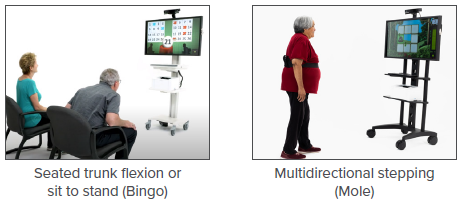Acute and chronic pain are prevalent in the United States and can affect an individual’s mobility, function, and independence. According to the CDC, approximately 20% of the adult population suffers from chronic pain. Opioids including oxycodone, tramadol, and fentanyl are among medications often taken for acute and chronic pain. However, opioids have numerous side-effects, are highly addictive, and can lead to overdose and death. Non-pharmacologic alternatives are recommended to address pain and can play a role during the weaning process from opioids.
Virtual reality (VR) and breathing therapy can play a role in pain management.
• Interactive virtual reality can provide distraction from pain and can decrease an individual’s pain perception (Pourmand et al., 2018).
• A systematic review of 23 studies showed VR was more effective than standard care for anxiety, depression, fatigue, and pain and contributes to evidence that distraction is an effective tool in symptom management (Ioannou et al., 2020).
• In another systematic review, findings suggest pain influences respiration by increasing flow, frequency, and volume of breathing. The majority of studies state breathing techniques, especially slow deep breathing, alleviate pain (Jafari et al., 2017).
• Slow deep breathing is more effective in decreasing pain when breathing is paced at a slow rhythm including longer expiration than inspiration (Jafari et al., 2020).
OmniVR® Virtual Rehabilitation System provides engaging immersive activity that can distract an individual from their pain, contributing to pain reduction, increased mobility, and improved function.

OmniFlow™ Breathing Therapy Biofeedback System can be performed with slow deep breathing and longer expiration techniques.

References:
Ioannou, A., Papastavrou, E., Avraamides, M. N., & Charalambous, A. (2020). Virtual Reality and Symptoms Management of Anxiety, Depression, Fatigue, and Pain: A Systematic Review. SAGE Open Nursing, 6, 2377960820936163. https://doi.org/10.1177/2377960820936163
Jafari, H., Courtois, I., Van den Bergh, O., Vlaeyen, J., & Van Diest, I. (2017). Pain and respiration: a systematic review. Pain, 158(6), 995–1006. https://doi.org/10.1097/j.pain.0000000000000865
Jafari, H., Gholamrezaei, A., Franssen, M., Van Oudenhove, L., Aziz, Q., Van den Bergh, O., Vlaeyen, J., & Van Diest, I. (2020). Can Slow Deep Breathing Reduce Pain? An Experimental Study Exploring Mechanisms. The Journal of Pain, 21(9-10), 1018–1030. https://doi.org/10.1016/j.jpain.2019.12.010
Pourmand, A., Davis, S., Marchak, A., Whiteside, T., & Sikka, N. (2018). Virtual Reality as a Clinical Tool for Pain Management. Current Pain and Headache Reports, 22(8), 53. https://doi.org/10.1007/s11916-018-0708-2
